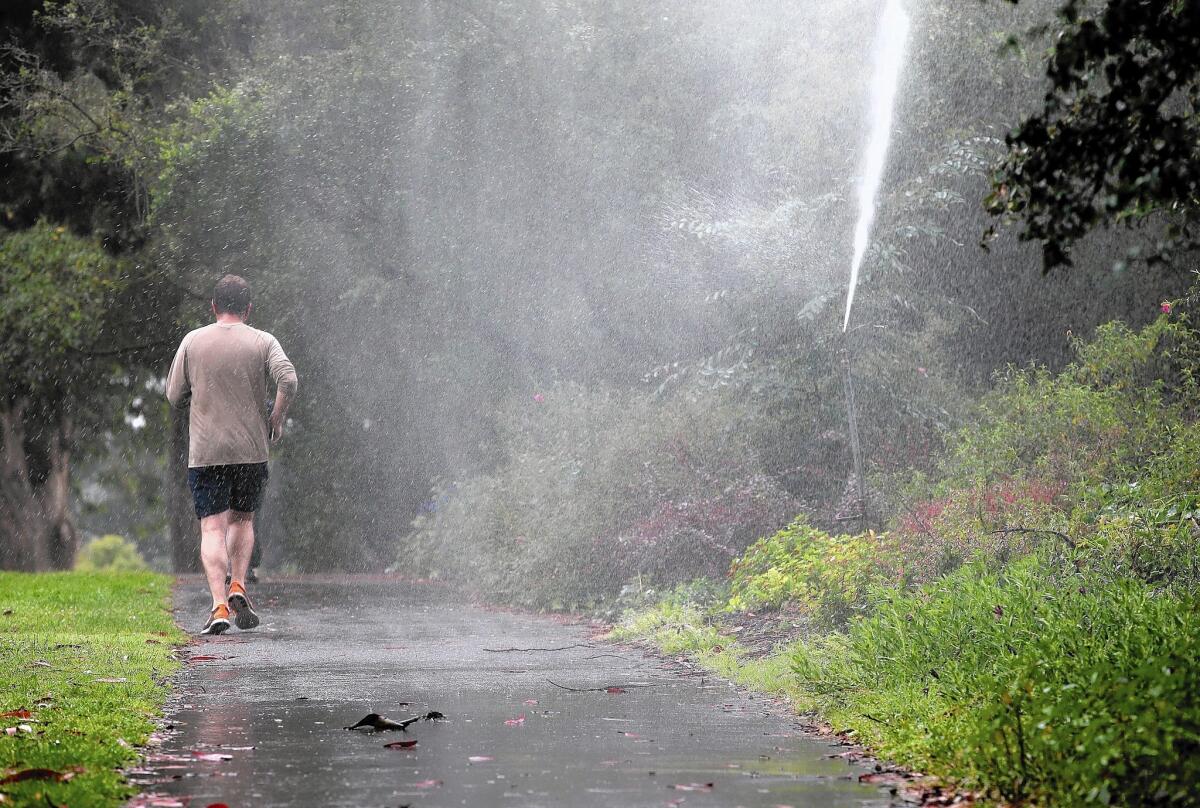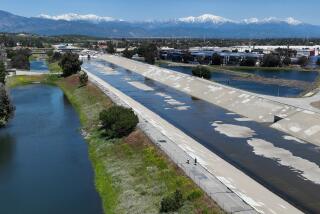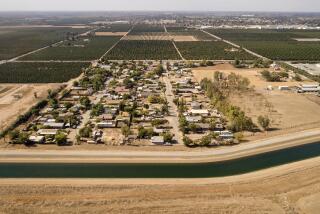California officials admit they have incomplete water usage data

When state regulators tried to tally water use across California recently, they didn’t exactly get a flood of cooperation.
Of the 440 water agencies in the state, only 276 provided water consumption data. And officials in San Diego made a point of formally refusing the request, saying the state’s method for measuring water use in California’s second-largest city was “misleading and technically inappropriate.”
The State Water Resources Control Board released the result of its survey earlier this month, showing an 8% increase in water use in Southern California in May while most of the rest of the state was using less water.
FOR THE RECORD:
Water survey: In the July 27 Section A, an article about a state survey on water use said that parts of Fresno did not have water meters. As of the beginning of 2014, the city was completely metered. —
The findings set off a firestorm, becoming fodder for talk radio, newspaper headlines and social media screeds about the wasteful ways of Southern Californians.
But a closer look at the numbers shows the picture is more complex. The survey reflected partial and incomplete data, and state officials admit that it was not a full accounting of how much water regions are using across the state.
Hoping to get a better view of the water usage, the state plans to do its first mandatory survey later this year. But officials said that won’t be a complete picture either because many water customers in the Central Valley and even parts of Sacramento and Fresno don’t have water meters.
The state’s May water survey has met with pushback from some cities seen as not conserving.
For example, the survey found that Santa Ana increased water consumption by more than 60% in May. The city, facing criticism over the finding, countered that consumption was up only 10%. The state now agrees the 60% figure was wrong.
Then there is San Juan Capistrano, which the state said had a 37% increase in water use. City officials, however, note that May was an outlier. A new golf course opened in the city, and there was an unusual amount of construction.
“One month doesn’t represent a trend,” said Francie Kennedy, the water conservation coordinator for San Juan Capistrano.
Southern California cities had other complaints about the survey results. The survey measured straight water use and did not take into account use per person. Southland cities also noted that May was unusually warm. It was the hottest May ever recorded in San Diego and the second-hottest in Santa Ana.
State officials said they will be using per capita water figures in future surveys but that should not distract from the larger reality.
“It is surprising that water use is up so much in Southern California, even accounting for the hot and dry May weather,” said Max Gomberg, the state board’s senior environmental scientist.
The study was initiated after Gov. Jerry Brown issued an emergency drought declaration in January and called for a 20% reduction in water use. The results were reached by comparing the average water use during the month of May from 2011 to 2013 to May of this year to come up with a percentage increase or decrease.
But because water agencies self-reported their data there were some mistakes. Initially, the board reported a 5% decrease in water use statewide.
In fact, water use statewide had increased 1%.
There were several reasons for the bad number.
The Los Angeles Department of Water and Power initially left the data for May blank, Gomberg said, adding that L.A. actually saw a 9% increase.
And the Irvine Ranch Water District made a typo, he said, that “overstated the amount of water used in the prior years by an order of magnitude.”
The state board maintains that, even with some cities not responding, the overall picture was fairly accurate.
“I wouldn’t call it a superb response,” Gomberg said of the participation levels. “But it did provide us with a pretty good confidence level that we were getting data that was representative of the state.”
While some water districts ignored the state’s request for data, San Diego went out of its way to challenge the survey.
The San Diego County Water Authority sent the state water board an email outlining its problems with the survey and saying it would not fully comply with the information request.
“Due to these concerns, we will be submitting the survey to communicate all the positive and constructive actions that the Water Authority and its member agencies are taking in drought response, but not provide the water use data requested,” wrote Dana Friehauf, the authority’s acting water resources manager.
In an interview, Friehauf said San Diego County is using the same amount of water it did in 1991 even though it grew by 700,000 people.
But it turned out San Diego had a 10% increase in water use in May, a number the state gleaned by reviewing minutes from San Diego water board meetings.
Gomberg and others admit pointing fingers about water conservation is tricky.
Southern California has led the way in groundwater storage, and has posted some of the most dramatic long-term gains in water conservation over decades.
Since the early 1990s, when a drought wracked much of the state, per capita water use in Southern California has plunged by 25%, said Deven Upadhyay, manager of water resources for the Metropolitan Water District, a wholesaler that serves an area of about 19 million residents.
“Regions of the state that have experienced the most severe water shortages, such as the Sacramento region, have had the greatest conservation response,” Gomberg said. “It is understandable that those regions would show greater conservation than regions where there’s more water storage.”
Stephanie Pincetl, the director of UCLA’s California Center for Sustainable Communities, said the water usage debate shouldn’t obscure a larger concern.
“I think we have a really big problem in California in that water agencies do not report water data in any kind of regular and granular level,” she said. “We really don’t know how much water is used by whom in the state. We can debate about methodology, but unless you have really reported data, it’s difficult to know.”
More to Read
Start your day right
Sign up for Essential California for news, features and recommendations from the L.A. Times and beyond in your inbox six days a week.
You may occasionally receive promotional content from the Los Angeles Times.






